- Administrator
- Albums and Singles

Collects the Universal Tongue and Small Doses Ostara 3"CDr tracks that have never been re-released. Newly mastered, the LP/CS downloads include 2 out-of-print cassette-only releases from Gold Soundz, Woolgather Visions and Mechanical Elements. Mother Universe features Matt Hill from Umberto on analog drum machine, synth and bass alongside Justin Wright's tripped-out guitar ambiance. The session was hugely inspired by Manuel Göttsching's legendary recording E2E4.
More information can be found here.
Read More
- Administrator
- Albums and Singles

"Fluxion's Ripple Effect is the film score for a non-existing motion picture. This nine-track album is the result of experimentation and the combination of the producer's two most cherished art forms: electronic music and score music. Ironically the two worlds rarely seem to meet, despite the fact that score music has adopted a looser form in order to better adapt to film accompaniment, bringing it closer to electronic music which attempts to contradict form or shed it altogether. Fluxion felt the need to bring these two musical forms into dialogue with each other, lending structure to electronic and deconstructing score music to create a malleable and expressive hybrid. The album's production took two years from its original conception for the subliminal story to unfold into the completed product. Fluxion wanted to say as much as possible through the music, leaving the visuals as a blank canvas for the listener to create their own story. In the end, the goal is to give each member of the audience a unique audiovisual experience based on their own perception and interpretation."
-via Forced Exposure
More information can be found here.
Read More
- Administrator
- Albums and Singles
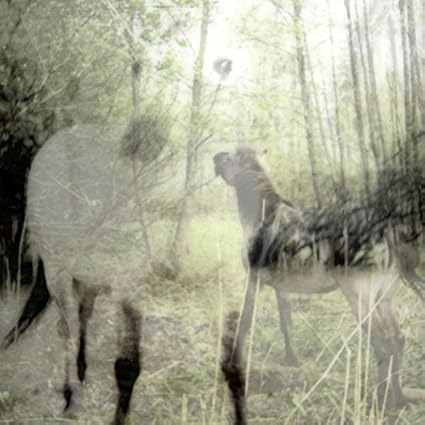
For over 10 years, Bart De Paepe has sated the appetites of psychedelic searchers with his label Sloow Tapes. A peerless curator, De Paepe has unleashed crucial underground transmissions ranging from paint-peeling Japanese rock to bedroom American Primitivism in microscopic editions. Those fortunate enough to have heard five or six of Sloow Tapes' releases may be prepared for what Pagus Wasiae- De Paepe's latest solo offering - has in store. The Stekene, Belgium-based artist's Beyond Beyond Is Beyond debut, Pagus Wasiae trades in lysergic texture. Like Tangerine Dream's early work, Pagus Wasiae casts off a ragged rock shore into a bubbling sea of electronics and navigates by dark starlight, leaving in its wake shadows and smoke. De Paepe charges waves of synth ambience, swirls clouds of electric guitar and summons subtle beats of the earth to make Pagus Wasiae a fully enveloping and dynamic listening experience-astral traveling without moving.
"Cluster, Taj Mahal Travellers, and Pink Floyd's deepest space excursions may be waypoints to Pagus Wasiae, but ultimately the destination is the journey and Bart De Paepe has drawn a new map and laid it to tape for us to discover." - Jeff Conklin (WFMU)
More information can be found here.
Read More
- Administrator
- Albums and Singles

The NY-based producer returns to Umor Rex with a new album, in which the musical discourse and the physical form of the release have an equal, crucial importance. Sirimiri is made of four long and mid-length pieces, each composed of different perspectives, processes and identities. However, Rafael seeks to blend subjective time with the listening experience. A sort of loop and repetition, sub-sequence-based sound. Following Eno, nothing happens in the same way twice, perception is constantly shifting, nothing stays in one place for long.
The sum of the four pieces is 36 minutes; the cassette edition lasts 72 minutes in total, since both sides have the same four songs joined together. Physically, the format allows us at least two automatic repetitions. In the digital version the songs are independent, but we also include a bonus track made of the 36-minute loop.
The desolation and despair (in a sort of positive way) that we got to hear in The Shameless Years (Umor Rex 2017) is present in Sirimiri, but the impression is concrete, with cruder, less rhetorical landscapes. If The Shameless Years was located between beauty and active tragedy, Sirimiri travels inside the beauty and melancholy of an observing eye, a quiet rebel insurrection. Another substantial difference is the distance from general and globalized concepts; in these unfortunate times, Sirimiri looks for personal sorrows, and places its focus on the particular. Even the names of the songs evoke this in small ways, like in "Sonder", the feeling of realizing that everyone, even a complete stranger, has a life as complex as one's own.
Rafael has two guests in this album; Taylor Jordan in "Mountain Stream", and Rafael's hero Carl Hultgren (from Windy & Carl) in "Sonder."
Sirimiri means 'drizzle' in Basque, and we cannot find a better word to describe its content.
More information can be found here.
Read More
- Administrator
- Albums and Singles

High quality reissue of the monumental work August 1974 by Japanese experimental music ensemble Taj Mahal Travellers. Pressed on 180gr. vinyl with extensive liner notes by Julian Cowley.
In April 1972, a group of Japanese musicians set off from Rotterdam in a Volkswagen van. As they crossed Europe and then made their way through Asia they made music in a wide range of locations. They also paid close attention to the changing scene and to differing ways of life. Midway through May they reached their destination, the iconic Taj Mahal on the bank of the Yamuna river in Agra, India. The Taj Mahal Travellers had fulfilled physically the promise of the name they adopted when they formed in 1969. But their music had always been a journey, a sonic adventure designed to lead any listener's imagination into unfamiliar territory.
The double album August 1974 was their second official release. The first, July 15, 1972, is a live concert recording, but on 19th August 1974, the Taj Mahal Travellers entered the Tokyo studios of Nippon Columbia and produced what is arguably their definitive statement. The electronic dimension of their collective improvising was coordinated, as usual, by Kinji Hayashi. Guest percussionist Hirokazu Sato joined long-term group members Ryo Koike, Seiji Nagai, Yukio Tsuchiya, Michihiro Kimura, Tokio Hasegawa and Takehisa Kosugi.
The enigmatic Takehisa Kosugi, whose soaring electric violin was such a vital element in their music, had been a pioneer of free improvisation and intermedia performance art with Group Ongaku at the start of the '60s. Later in that decade, before launching the Taj Mahal Travellers, he had become known internationally through his association with the Fluxus art movement. During the mid-70s the Travellers disbanded and while his colleagues more or less stopped performing as musicians, Kosugi continued to reach new audiences across the course of several decades as a composer, regular performer and musical director for the acclaimed Merce Cunningham Dance Company.
August 1974 captures vividly the characteristic sound of the Taj Mahal Travellers, haunting tones from an unusual combination of instruments, filtered through multiple layers of reverb and delay. Their music has strong stylistic affinities with the trippy ambience of cosmic and psychedelic rock, but the Taj Mahal Travellers were tuning in to other vibrations, drawing inspiration from the energies and rhythms of the world around them rather than projecting some alternative reality. Films of rolling ocean waves often provided a highly appropriate backdrop for their lengthy improvised concerts. This is truly electric music for the mind and body.
More information can be found here.
Read More
- Administrator
- Albums and Singles
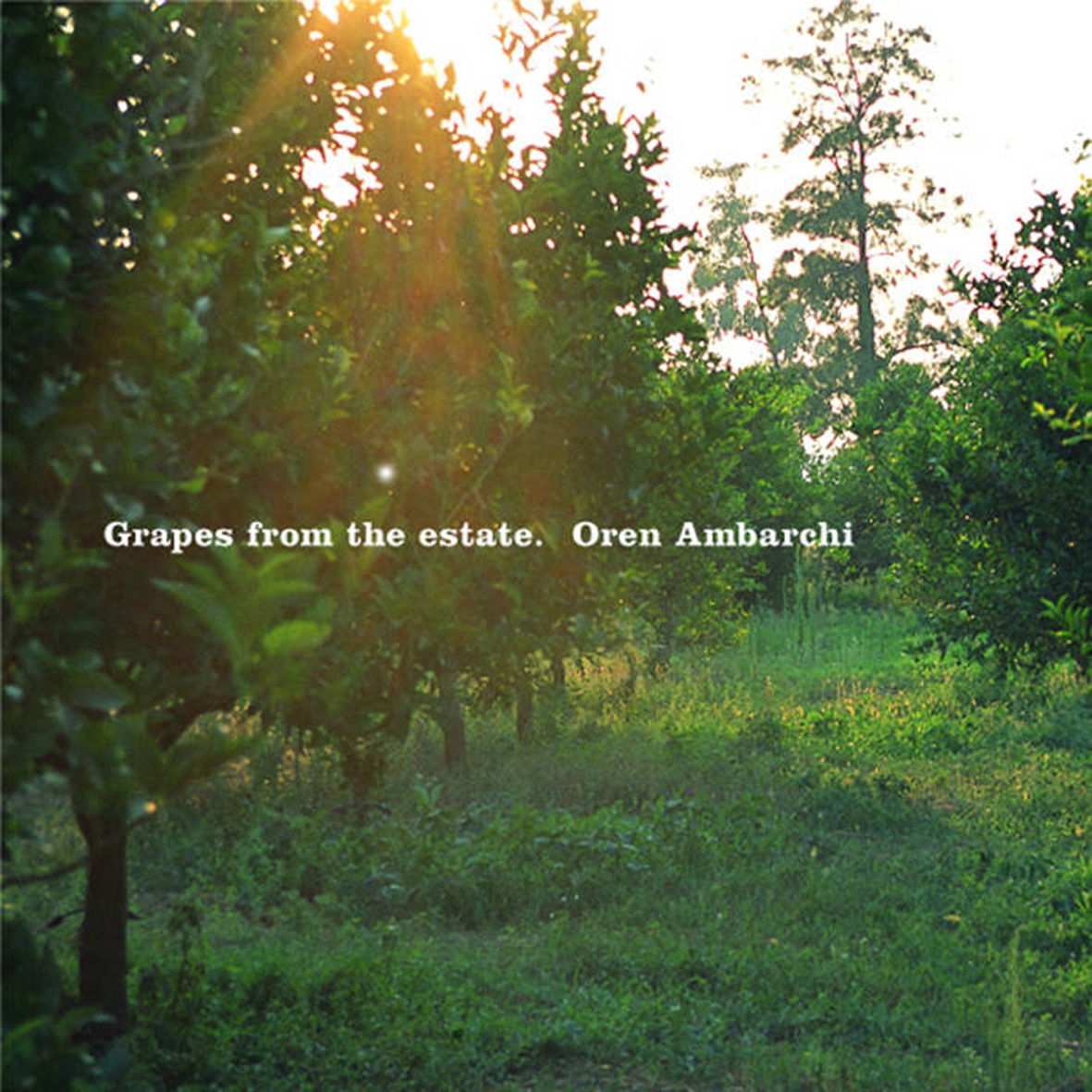
Newly reissued on his own Black Truffle imprint, this 2004 album (originally released on Touch) stands as one of the most enduring and transcendent gems in Ambarchi's lengthy discography. Obviously, he has released plenty of interesting and inventive music since, yet his early 2000s Touch albums are the ones that resonate most deeply with me and this one is my favorite. Grapes From The Estate has a wonderfully languorous and lovely melodic sensibility akin to relative contemporaries like Labradford, yet that is only one of the many threads that Ambarchi pulls into this quietly visionary suite. Part of me wishes Oren would someday return to something resembling the languid, sun-dappled beauty of this era, but I would be hard-pressed to come up with a valid artistic reason for him to do so, as I cannot imagine a more perfect distillation of this aesthetic vein being possible. Almost 15 years later, Grapes still sounds like a wonderfully distinctive, absorbing, and unrepeatable convergence of vision, inspiration, and execution.
The soul has been poetically referred to countless times as "the ghost in the shell" and that phrase keeps relentlessly popping into my head whenever I search for words to describe Ambarchi's aesthetic on this album.Naturally, a small part of me is now worried that I have begun thinking entirely in clichés, yet it is unquestionably apt for my purposes here: Grapes From The Estate sounds like the spectral residue that would remain if the shell of a great dub-techno album were eviscerated.It is not quite that simple and linear, of course, but these four pieces make a lot of sense when viewed in that light.The opening "Corkscrew" is an especially radical example of that vision, as feels like a bass line that has been completely dissolved to leave only a quavering thrum of deep harmonics.There is also arguably a rhythmic component of subtle clicks and pops, which only adds to the sensation that Ambarchi has slowed time to a crawl to magnify all of the quietest, most fragile sounds and allow them to linger around long enough to get the attention they would have never gotten otherwise.The closing "Stars Aligned, Web Spun" is similarly extreme in its understated, slow-motion minimalism, as it is initially just a single obsessively repeated note, which is a cunning bit of sleight of hand, as the real action is lurking in the depths: a deep bass drone fitfully throbs to weave a shuddering undercurrent of overtones and seismic oscillations.Without decent speakers or suitably extreme volume, it is probably easy to miss all the low-end dynamics, but "Stars Aligned" gradually becomes quite lovely in the foreground too, as a lazy trickle of gentle harmonics steadily forms a rippling haze of heavenly harmonies and lingering afterimages.Both of those bookends are certainly inventive and assured sound art that display a singular lightness of touch and attention to detail, as well as an almost supernatural degree of patience.As fine as they are, however, the album's greatest moments lie between them.
Initially, "Girl With The Silver Eyes" feels an awful lot like a reprise of "Corkscrew," albeit one where the bass harmonics actually cohere into a languorous groove of sorts.In fact, Ambarchi soon bolsters that foundation into a slow-building simmer with some throbbing sub bass and a slowly shuffling snare rhythm thrown in, marking the first appearance of any conventional percussion on the album.He also fleshes out the piece's melodic components in characteristically hyper-minimal and restrained fashion, as a sleepy flow of electronic bloops and an occasional electric piano or organ note hint that some kind of actual song may eventually take shape.It is debatable as to whether that ever happens, but something else extremely cool happens instead, as rippling cascades of irregular arpeggios unexpectedly blossom forth, which feels like quite a dazzling splash of color in this slow-boiling context.Notably, that is the first recognizable appearance of a guitar on the album, which reminds me that Ambarchi was primarily known as an experimental guitarist around this time.With Grapes, he expanded that palette dramatically, though I would be hard-pressed to guess where most of these sounds originated.Still, Oren's newly neglected guitar is wielded to great effect when it appears, as the notes in "Silver Eyes" tumble blearily into the picture and hang there lysergically.Ambarchi's guitar talents also surface in the following "Remedios The Beauty" (now acoustic).Again, Oren uses his guitar sparingly yet achieves maximum effect, playing just one ringing note at a time and using the sharpness of the attack to cut through the blurry, undulating web of pulses that form the piece's foundation.The rest of the piece is certainly strong enough without that enhancement though, as those pulses make for an appealingly melodic and woozily dreamlike hook, which Ambarchi later builds into a crescendo of buried strings, layers of arpeggios, and a countermelody of sustained, descending piano tones.He walks a fine line here, masterfully holding together the album's warmly beautiful, hypnagogic spell, while stealthily incorporating some actual solidity and structure.
It is always an interesting experience to revisit a beloved album from an earlier era in my life to see how it holds up against both my evolving taste and the passage of time.When I first heard Grapes, I immediately appreciated that it was an excellent album, but it seemed like very much a part of the Touch milieu (which was having quite a hot streak in those days with Philip Jeck, Phil Niblock, Fennesz, and others).I did not fully grasp, however, how truly unusual this album was nor did I know enough about Ambarchi to appreciate what a leap forward this album was for him.I am not sure if it is quite accurate to say that Grapes was ahead of its time, as it was very much of its time in many ways-it just happened to be an especially brilliant and seamless synthesis of seemingly disparate threads.It was certainly ahead of my time though, as I have much deeper appreciation for details and textures these days.Consequently, I am now properly dazzled by how Ambarchi was able to transform the idea of a bass line into something that resembles slowly moving droplets of shivering mercury and how he was able to slowly transform just a few repeating notes into a quietly gorgeous 20-minute epic of massing overtones and oscillations.As such, the benefit of hindsight has opened my eyes quite a bit and revealed depths to this album that only deep listening can reveal: I used to like Grapes because it had a couple of excellent songs, but now I love it because it is a masterfully executed and elegant tour de force of wonderful textural touches and simmering dynamic restraint.This is more than a fine album–it is legitimately great art.
 
Read More
- Administrator
- Albums and Singles
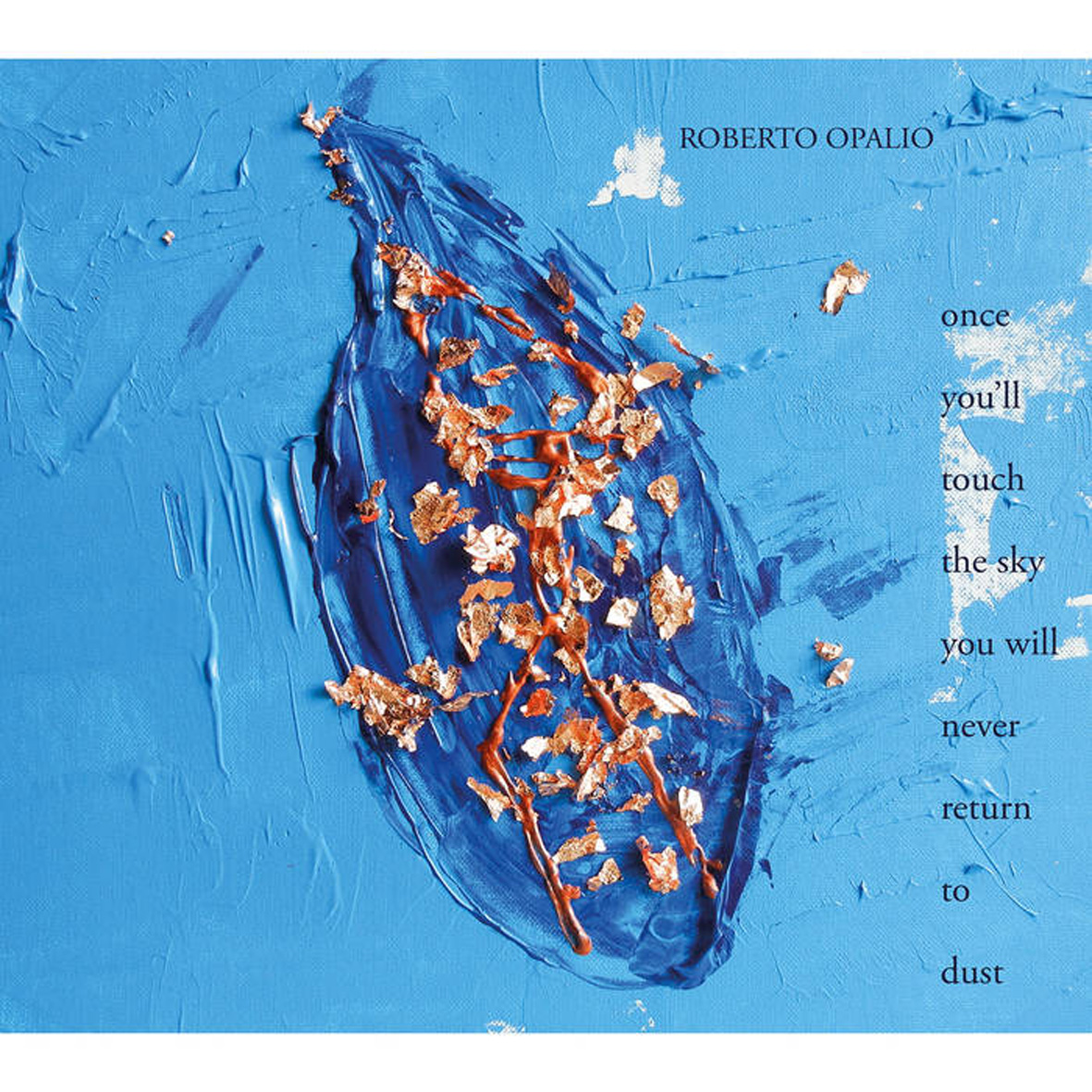 Seemingly birthed from the same fascination with vinyl surface noise as The Sky With Broken Arms, Roberto Opalio's solo companion piece is perhaps even more unique and consciousness-expanding than its sister. It is also unexpectedly varied and weirdly beautiful at times, blurring together the usual deep-space lysergia with viscerally unnerving dissonances and hypnotically looping crackles and pops. While those added touches certainly delight me, this album is unmistakably and absolutely Opalio-esque to its core, standing as one of the most sharply realized and distilled releases in the MCIAA oeuvre. If The Sky With Broken Arms is a brief glimpse into a hypnotically otherworldly scene, Once You'll Touch The Sky is a phantasmal travelogue of the troubled dreams that follow in its wake.
Seemingly birthed from the same fascination with vinyl surface noise as The Sky With Broken Arms, Roberto Opalio's solo companion piece is perhaps even more unique and consciousness-expanding than its sister. It is also unexpectedly varied and weirdly beautiful at times, blurring together the usual deep-space lysergia with viscerally unnerving dissonances and hypnotically looping crackles and pops. While those added touches certainly delight me, this album is unmistakably and absolutely Opalio-esque to its core, standing as one of the most sharply realized and distilled releases in the MCIAA oeuvre. If The Sky With Broken Arms is a brief glimpse into a hypnotically otherworldly scene, Once You'll Touch The Sky is a phantasmal travelogue of the troubled dreams that follow in its wake.
In the eternally shifting cosmic fantasia of My Cat is an Alien, few things can ever be said to be normal or expected, but "Preludio" finds Roberto opening the album in relatively familiar territory, albeit only briefly.It is a curious sequencing decision, as the bleary haze of spectral vocal cooing and gently blooping and whooshing alientronics does nothing to prepare me for the sustained plunge into the swirling and hallucinatory altered reality that follows.Knowing the proud Opalio tradition of "spontaneous composition," I am rather amazed at the scope, depth, and nuance of the title piece, as Roberto seamlessly transforms its shape again and again like an alien mirage.In hindsight, I suspect "Preludio" exists solely because "Once You'll Touch The Sky" plunges immediately into the lysergic depths rather than wading slowly in through the usual slow accumulation of loops.The opening theme roughly resembles organ drone, though Roberto seems to be playing a modified mini-keyboard through some pitch-shifting and wah-wah effects to weave an unsettling web of undulating and eerily harmonizing glissandi.That opening nicely illustrates an aspect of the Opalios' work that I always enjoy: their approach to psychedelia is an uncompromisingly complete one, as their best work is an absolutely engulfing experience that provides no solid ground or recognizable reference points to get my bearings.It is not an entertainment–it is an ocean that I am dropped in and I am forced to give myself over to it and go where its tide takes me.In fact, there is no better metaphor for this album than submersion, as its slow transformations feel like being immersed in a viscous liquid that is continually morphing into new colors, textures, and sundry other sensory and extra-sensory phenomena.
Despite the album's fundamental state of constant flux and celebration of queasily undulating textures and harmonies, its various threads occasionally converge into an oasis of dreamlike beauty.I would not necessarily describe the spell of this album as "nightmarish," as there is no real sense of menace, yet the dream state it evokes is definitely an unsettling and unnervingly ambiguous one.As such, it can be quite striking and wonderful when the seemingly endless and impenetrable phantasmagoric mists of Roberto’s vision occasionally give way to a glimpse of heaven (such as the languorous and tenderly warbling reverie that starts to cohere around the 15-minute mark).Those glimpses are always elusive and short-lived, of course, but the fact that it can appear at any time is what makes this album such a complex and entrancing experience. As lovely as the aforementioned interlude is, however, it becomes even more compelling once Roberto's crackling and popping vinyl noise slowly creeps into the picture.Interestingly, that haplessly ravaged vinyl collection does not get a credit on this particular releases, so I believe Roberto is merely approximating its sound with his handmade shortwave receiver.In any case, he takes a different approach with crackle and sizzle here than he did on The Sky With Broken Arms, as it takes shape as kind of a slow, locked-groove-style pulse.There is considerably more happening than that though, as there are some fascinating microcosmic dynamics unfolding as well: the pops and scratches seems to be slightly out of phase and tumbling over one another.It is a truly wonderful bit of sorcery, completely stealing attention from the more overt motifs unfolding around it.It feels a lot like the sky opened up to slowly wash away the rest of the album with an unnaturally reverberating and purifying drizzle.That is a fine way to end an album.
As with all recent My Cat is an Alien releases, it feels hopelessly reductionist to view Once You'll Touch The Sky as an album and even the fact that it is art feels somewhat beside the point.Instead, it is something more akin to a religious experience–not in a hyperbolic sense, but it is definitely a ritualistic event that can transform the energy in a room and strip away the veil of consciousness for a while.That said, sometimes the stars metaphorically line up perfectly to create an especially transcendent communion with the Opalios' extra-dimensional plane of consciousness and this is one of those times.Once You'll Touch the Sky is one of the true gems in the MCIAA canon, as it is every bit as immersive and reality-dissolving as I would expect, but goes a bit deeper and further than usual in every sense.This is more than just a gateway into an alien dreamscape, as it has a clear arc that leads far beyond the starting point.Also, it feels like an unusually soulful and tender journey.I do not think I have ever described an album by the Opalios as soulful before, as subtle shades of emotion tend to get hopelessly eclipsed by the all-engulfing scope of their lysergic vision, but this album is understated and purposeful enough to let Roberto's humanity seep into its ecstatic alien reverie.
 
 
Read More
- Administrator
- Albums and Singles
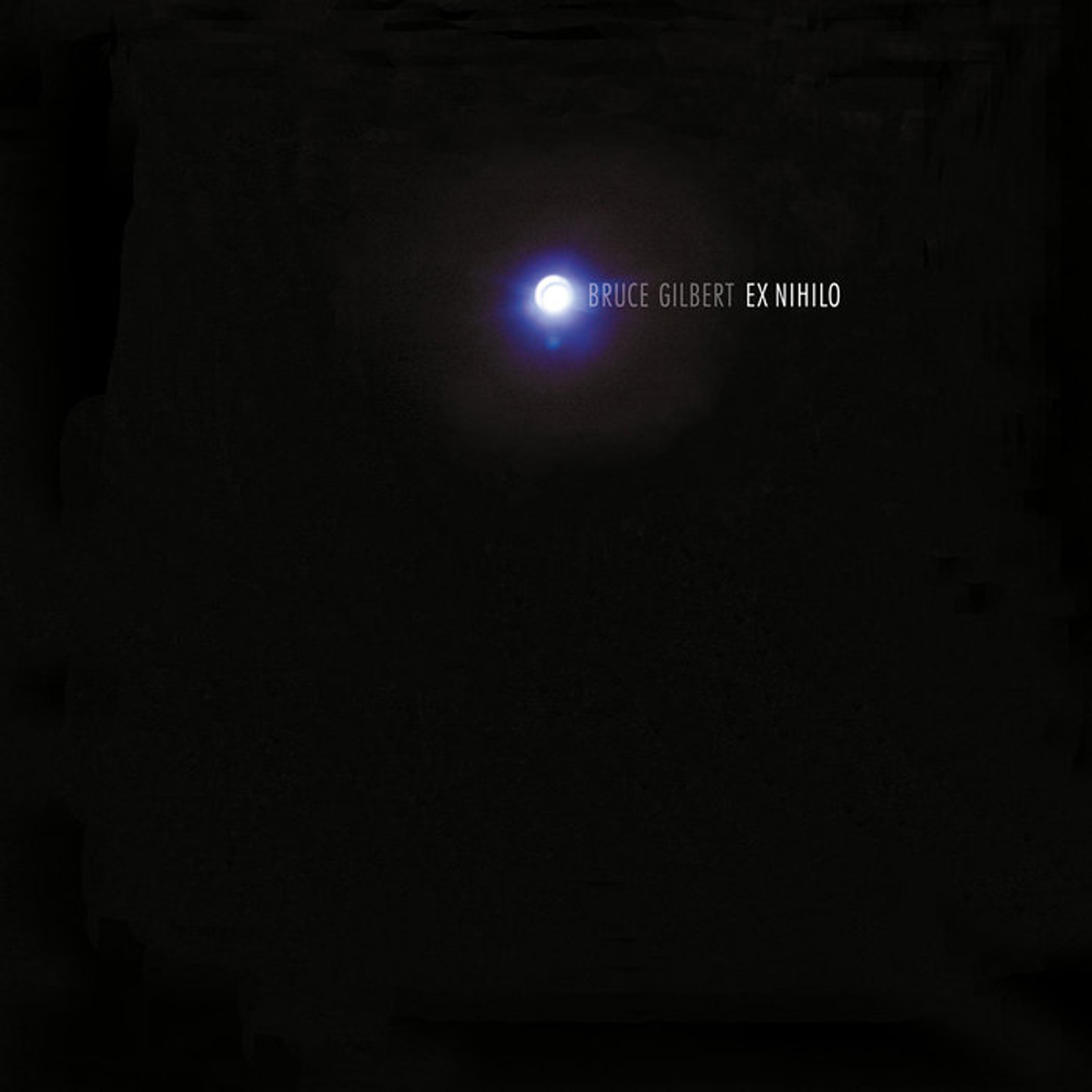 Remarkably, this is the first Bruce Gilbert solo album that I have ever heard in its entirety and I was pleasantly surprised to discover that it is radically different from any of his other work that I have encountered: it is clear that I woefully underestimated the depth and breadth of the Gilbert oeuvre. This latest release continues to delve deeper into the coldly futuristic and menacing vein of his previous Editions Mego album (2009's Oblivio Agitatum), yet does so in wonderfully explosive and visceral fashion. Ex Nihilo feels like the soundtrack for a bleakly alienating dystopian city of endless metal and neon, composed by a cyborg with a fairly hostile disposition. Those hoping for any trace of melody or tenderness in Gilbert's industrial dread should probably skip this one, but there is definitely a gleaming, inhuman majesty to these grinding and throbbing soundscapes.
Remarkably, this is the first Bruce Gilbert solo album that I have ever heard in its entirety and I was pleasantly surprised to discover that it is radically different from any of his other work that I have encountered: it is clear that I woefully underestimated the depth and breadth of the Gilbert oeuvre. This latest release continues to delve deeper into the coldly futuristic and menacing vein of his previous Editions Mego album (2009's Oblivio Agitatum), yet does so in wonderfully explosive and visceral fashion. Ex Nihilo feels like the soundtrack for a bleakly alienating dystopian city of endless metal and neon, composed by a cyborg with a fairly hostile disposition. Those hoping for any trace of melody or tenderness in Gilbert's industrial dread should probably skip this one, but there is definitely a gleaming, inhuman majesty to these grinding and throbbing soundscapes.
The album opens in impressively snarling and hostile fashion with "Undertow," which feels like a randomized and chromatic series of densely throbbing drones that relentlessly moves forward like tank.Despite lasting for over six minutes, it never quite evolves into anything more, which seems to be exactly the point: "Undertow" is essentially just a mercilessly buzzing and roiling juggernaut of a piece.I quite like it, as Gilbert's vision is a fairly singular and powerful one despite its self-imposed limitations.I am especially struck by his talent for self-effacement, as "Undertow" feels like it was created by a malevolent algorithm in a bad mood rather than a human.I suppose plenty of modular synth music also sounds like the direct result of math and circuitry, but what matters is how well an artist is able to harness that power and steer it towards something novel and interesting.In that regard, Gilbert succeeds on two levels.On pieces like "Undertow" and "Hymn," the sounds he gets are truly vibrant, gnarled, jagged, and immense-sounding: Ex Nihilo is a legitimately heavy album.Beyond its occasional dazzling displays of brute force, however, Gilbert does an impressive job of creating and sustaining his own vividly realized sci-fi nightmare world, which can be quite immersive despite its sharp edges.Taken as a whole, these nine pieces have an evocative, cold beauty to them that stealthily surfaces whenever the buzzing and grinding industrial cacophony wanes in intensity.
That said, I do tend to like the more ravaged and corroded pieces the most, especially the aforementioned "Hymn," which sounds like the most blackened and inhuman interpretation of that word possible.Initially, however, there are some tenderly whimpering and dreamily swooping tones that sound like an elegant dance of ghostly feedback.That does not last long, however, as the opening motif is soon eclipsed by densely lurching and grotesquely glimmering fantasia of crawling and blurting bass tones; sickly harmonies; and shrilly twinkling synth arpeggios.It feels a lot like a nightmare in which a starry night sky has turned evil and decided to smother me.The following "Black Mirror" is similarly harrowing, as it sounds like Gilbert took a bunch of contact mic recordings of heavy construction equipment, then set about making them sound even more industrial: it is roughly four minutes of brutally grinding, shuddering, and buzzing industrial chaos.Even the less overtly hostile fare on Ex Nihilo can be quite challenging though.For example, the eerily pretty and burbling reverie of "HA8" proves to be just a mere prelude to much darker fare, dissolving into a miasma of distant rumbling and ugly quavering synth washes that sounds like a chorus of slowed down sirens in disharmony with one another.In fact, now that I think of it, Ex Nihilo sounds like a darkly lysergic futurist dystopia built largely from repurposed sirens and construction noises.It definitely feels like Gilbert painstakingly crafted a haunted and shadowy imaginary city, then gleefully set about trying to soundtrack it with what he envisioned car alarms and jackhammers might sound like in 300 years.That aesthetic is far more listenable than it sounds, but it is still quite a challenging and perverse vision.
Only one piece divergences from that aesthetic much at all: the obsessively throbbing "In Memory of MV," which sounds like a locked groove of a thick synth or wave generator pulse with some subtle industrial textures billowing out from the edges.It still sounds like the machines are in control, but it is at least possible to imagine Gilbert in the picture turning dials somewhere.That is not the case with the rest of the album, for the most part, as he was far more intent on crafting a richly textured, unsettling, and imaginative world than he was in crafting individual songs or leaving much evidence of his touch.While a few pieces are focused and confrontational enough to work as solid noise pieces, Gilbert's real achievement lies in the masterful and sustained illusion that he conjures: Ex Nihilo is a glimmering and nightmarish cityscape seething with dread and menacing machinery. It certainly is not pretty, but it is unquestionably a powerful and memorable vision.Bruce Gilbert's prodigious talents for subversion and alienation remain as sharp as ever.
 
Read More
- Administrator
- Albums and Singles
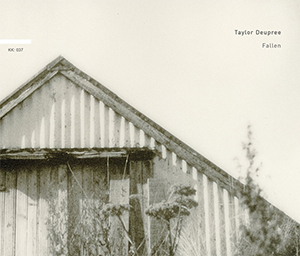 For his first solo album on a label other than his own for quite some time (although 12k and Spekk could almost be siblings in the world of record labels), Fallen features the prolific sound artist turning his focus to beautifully understated sounds to the piano, culminating in eight songs of delicate and pensive tones, with the focus shifting between the pure sounds of the instrument to gorgeous production and back again.
For his first solo album on a label other than his own for quite some time (although 12k and Spekk could almost be siblings in the world of record labels), Fallen features the prolific sound artist turning his focus to beautifully understated sounds to the piano, culminating in eight songs of delicate and pensive tones, with the focus shifting between the pure sounds of the instrument to gorgeous production and back again.
On many parts of Fallen, Deupree lets the piano do most of the proverbial talking, though things never are that simple.Initially intended to be a solo piano record, Deupree ended up expanding his palette and introduced synths and guitar as well, though the primary instrument is largely the focus.For the opening song, "The Lost Sea," sparse notes spring up from a bed of pleasant analog hiss, resulting in just enough distortion and sonic grime to increase the sense of complexity, with the sounds between the notes carrying just as much weight as the piano itself.There is an almost natural sense of processing to the sound of "Sill," a composition that is simultaneously imposing and delicate, building to a rainstorm like roar at its conclusion.
A warm, inviting analog space encapsulates the layers of "Paper Dawn," a piece that features less processing but no less complexity, resulting in a Spartan, but also delicate mood.The synth opening contributes to a less distinct but no less gorgeous mass of tone and texture, but eventually the piano appears, and commandingly so.From there on, the natural and processed sounds coexist splendidly, culminating in a conclusion of tape wobble and gentle fade.In a similar dynamic, "For These in Winter" is at first a clattering of what could be pots and pans in a kitchen, before Deupree blends in a bit of complex notes and piano performance.
A song such as the expansive "Unearth" is a high water mark on an album with many memorable moments.First a composition of shimmering, expanding piano notes, there is an added dimension from some droning low end rumble and richer processing in instrumentation that keeps its subtlety but dynamically expands, ending on a memorable repetitive set of loops.The more significant processing to piano throughout "Small Collisions" also makes it remarkable, blended with a multifaceted buzz and repetitive, yet complicated interference-like electrical hum to give it a notable sense of depth.
Album closer "Duskt" is the perfect conclusion for the disc, acting as a culmination of what preceded it.From beginning to end, it sounds like Deupree’s taped performance is quickly decaying away.The notes shimmer, but each pass sounds as if more and more of the magnetic material of the master tape is flaking away, fragmenting the sound and adding additional distortion.That distortion builds and swells consistently, finally hitting a peak before then falling away to end the album on a peaceful, very analog note.
Fallen is a brilliant record in its own right, but part of the allure of Taylor Deupree's work is analyzing exactly how he managed to get the sounds he does.Both as a composer and mastering engineer, his technological skills in the realm of production are unquestionably genius, but I know he is just as likely to record the sound of a thrift store toy keyboard as he is a gigantic modular rig.So when I listen to the aforementioned "Duskt" I cannot help but wonder if what I am hearing is the result of a complex chain of digital signal processing and treatments or if he actually did just record a performance on a tape that was buried in his back yard for two years via a malfunctioning four track machine.Never being able to know the truth is, of course, part of the magnificence of his work, and one that kept me revisiting Fallen.
samples:
 
Read More
- Administrator
- Albums and Singles
 Joao Da Silva’s latest release under his Luciernaga guise was a quickly made work, but that is anything but apparent from the contents. The tape, recorded this past winter, is an excellent summation of the work Da Silva has been involved with for the past eight years, with some additional and unexpected twists and turns along the way. Rich electronics, unconventional guitar, and lush production all define this latest entry in the growing Luciernaga discography.
Joao Da Silva’s latest release under his Luciernaga guise was a quickly made work, but that is anything but apparent from the contents. The tape, recorded this past winter, is an excellent summation of the work Da Silva has been involved with for the past eight years, with some additional and unexpected twists and turns along the way. Rich electronics, unconventional guitar, and lush production all define this latest entry in the growing Luciernaga discography.
It is difficult to ignore the overt nods to The Smiths on It Takes Strength to be Gentle and Kind.The title, of course, is a line from "I Know It’s Over," and the photography and design of the cover art could easily be that of some long lost single of theirs.The eight compositions within, however, are not quite that reminiscent of anything Morrissey or Johnny Marr has engaged in, either then or since.Instead it is clearly the work of Da Silva:pensive, meditative electronics, tasteful distortion, and some guitar here and there.Both "001" and "006" encapsulate the placid, electronic focused side of the Luciernaga sound.The former is a pleasant mass of simmering, multilayered tones, but with a pleasingly ghost-like undercurrent to the sound, adding a sprinkle of dreariness.A percussive bit is added later on, just a simple click, but is a great counterpoint to the sustained and elongated tones.For "006," he manipulates some gorgeously dour melodies with some glistening electronics, making for a distinct contrast, but in an all too brief piece.
It Takes Strength is not all airy electronics and phantasmal melody, however.There is an added amount of distortion and roughness on "002," but one that stays appropriately reigned in, allowing melody to slide through and an overall captivating and engulfing sound.By the time "003" comes around he has brought in guitar and what sounds like an organ, but all captured with a pleasantly low fidelity recording that gives it a varied, organic edge.By the end of the song Da Silva has thrown in in a pulsing synthesizer to result in a multilayered, highly varied work.He also works in a shruti box throughout "005," but caked in a massive wall of reverb, culminating in a sound that is far heavier and commanding than it would seem based on the instrumentation.
I have never thought of Luciernaga as a harsh or noise-based project, nor do I think it ever will become one, but Da Silva does push things into noisier frontiers towards the end of the tape.Much of "007" is pleasant light ambient backing, but he throws some nicely forceful guitar clang to mix things up a bit and keep things with a bit of edge.On the concluding "008," he goes a bit further with distortion.The piece quickly becomes a thick mass of layered guitar and electronics:a dense mass that expands and grows until it collapses into an imposing wall of noise.
After a smattering of recent collaborations and live releases, I was rather happy to listen to a new studio work from Luciernaga, and It Takes Strength to be Gentle and Kind is a completely rewarding experience from start to finish.It was refreshing to hear him working within a framework where he could draw on all different elements of his style and instrumentation. Da Silva’s has sadly stayed under the radar in an all too crowded world of ambient and experimental music, but with each release he further solidifies what an amazing and diverse artist he is.
samples:
 
Read More
- Administrator
- Albums and Singles
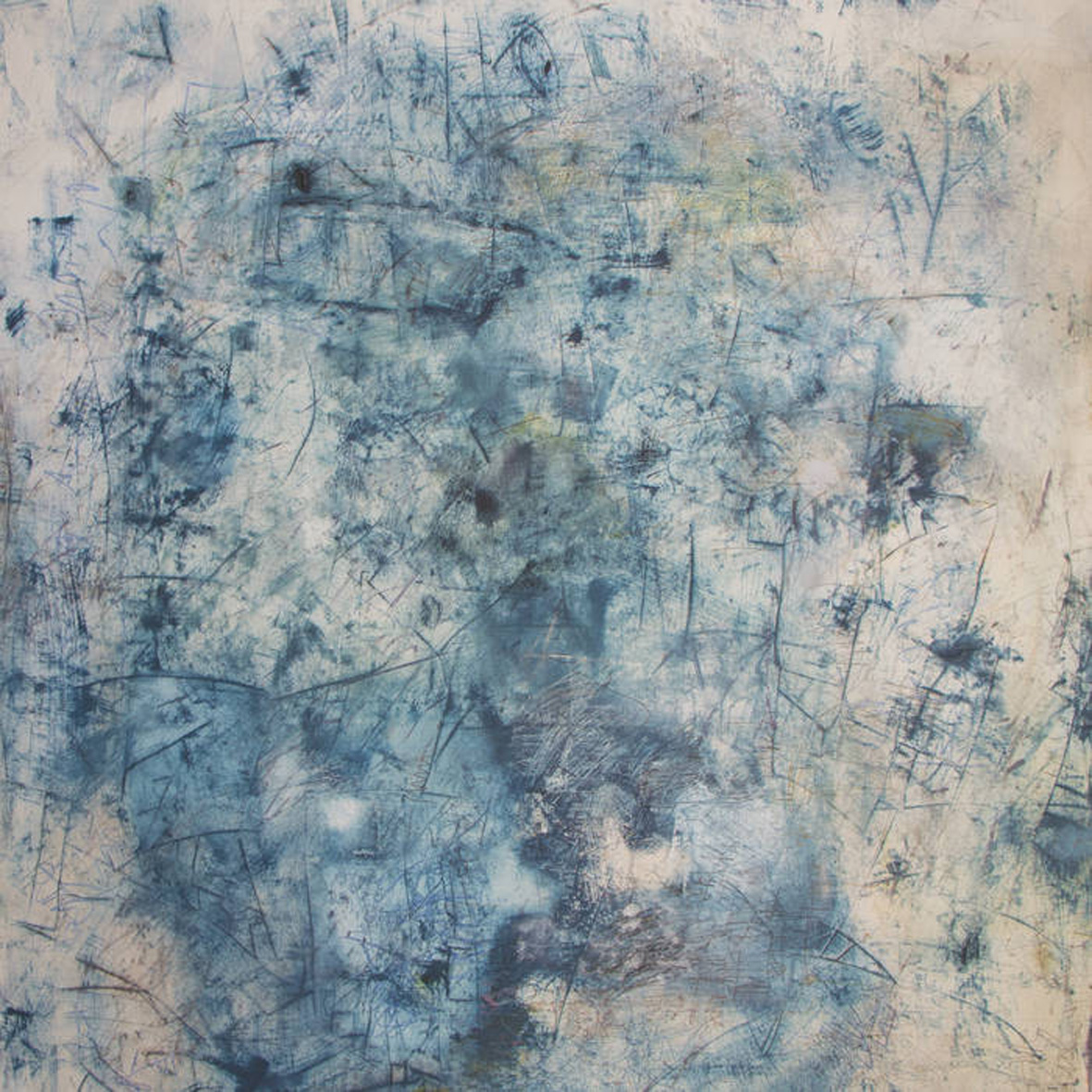 It has been roughly four years since Ashley Paul's last album and I was beginning to despair, but she has been busy moving to London and becoming a mother. While the latter is not particularly conducive to tirelessly crafting brilliant experimental music, she somehow still managed to compose her finest album to date during a brief residency in Spain. Characteristically, the pointillist, prickly dissonance of Jandek is probably the nearest touchstone, yet Paul radically transforms that stark foundation into something sensuous and eerily beautiful (sometimes even embellishing it with perversely festive splashes of color).  In fact, a few pieces even sound like grotesque caricatures of nursery rhymes (Paul’s baby was perhaps a subconscious and subversive muse), which only deepens Lost in Shadows' dreamily wraithlike and otherworldly spell. While it can definitely be a challenging, dissonant, and disturbing listen at times, Shadows is unquestionably Paul's masterpiece.
It has been roughly four years since Ashley Paul's last album and I was beginning to despair, but she has been busy moving to London and becoming a mother. While the latter is not particularly conducive to tirelessly crafting brilliant experimental music, she somehow still managed to compose her finest album to date during a brief residency in Spain. Characteristically, the pointillist, prickly dissonance of Jandek is probably the nearest touchstone, yet Paul radically transforms that stark foundation into something sensuous and eerily beautiful (sometimes even embellishing it with perversely festive splashes of color).  In fact, a few pieces even sound like grotesque caricatures of nursery rhymes (Paul’s baby was perhaps a subconscious and subversive muse), which only deepens Lost in Shadows' dreamily wraithlike and otherworldly spell. While it can definitely be a challenging, dissonant, and disturbing listen at times, Shadows is unquestionably Paul's masterpiece.
The album opens in truly inspired fashion, as the lurching and woozy "Blanquita" feels like a nightmarish parade of dead-eyed stuffed animals (very much establishing the darkly surreal tone of everything to follow).I love everything about "Blanquita," as almost every element feels broken, wrong, or drugged in some way, yet it still maintains a zombie-like forward motion and a strong melodic theme.It also highlights a notable feature of Lost in Shadows: a tendency towards brief and erratic song structures: "Blanquita" clocks in at just over 90 seconds and only a couple of pieces ever crack the 4-minute mark.On a different album, that might signal a sketch-like, unfinished quality or a dearth of ideas, yet it seems absolutely perfect here, as Shadows feels like a flickering and elusive funhouse of creepy dreams.Each individual piece is like a glimmering shard from a fragmented whole and I never know what shape I will get or what it might blossom into.For example, the following "Reflection" initially feels like a lilting lullaby over an obsessively repeated and dissonant arpeggio, but unexpectedly opens into a far more texturally and harmonically rich vista after about 30-seconds: the chords start changing, a groaning cello melody appears, a second vocal track adds new harmonies, and bowed strings start skittering, scraping, and stumbling drunkenly across the soundscape."Bounce Bounce" is similarly radical and revelatory, unfolding as an insistent tuba groove over some off-kilter hand percussion that precariously teeters between queasily dissonant saxophone howls and something that sounds like a hapless string quartet who wandered into the wrong session.
While this album is essentially a wonderfully disorienting cavalcade of inventively strange and ghostly vignettes, there are still a couple of pieces that still stand out as highlights.The album's centerpiece is the languorously flowing "Night Howl," which feels like somnambulant ghost-poetry floating through a lysergic landscape of broken arpeggios, tuba drones, churning cellos, and alternately strangled and whimpering saxophones.I also love the jaggedly stumbling and skwonking cabaret of the damned that is "Breathless Air."Paul has a real genius for evoking what an undead jazz ensemble might sound like, distracted wandering into melodies and flubbing random notes as fingers fall off or skeletal appendages scrabble hopelessly at the fretboards of their rusted and rotting instruments.Nevertheless, she always finds a way to make her macabre tableaux feel weirdly tender and childlike, like a glimpse of a disarmingly loving and innocent moment in some kind of German Expressionist house of horrors.There are occasionally even moments of relatively pure beauty, such as the gently lilting "Two Ships," which provide a nice counterbalance to the more outré moments like "What Happens" (which sounds a badly malfunctioning animatronic jazz ensemble).
As much as I love Ashley Paul’s previous work, she seems to have truly outdone herself with Lost in Shadows, as this album feels like straining floodgates were finally opened and a rapturous torrent of backlogged great ideas poured out.This is the rare album where my favorite song is constantly changing and there is nothing at all that can be dismissed as uninspired (though the 30-second "The Between" is a bit too insubstantial to make much of a mark).There is simply so much to be delighted by here, as Paul masterfully weaves together all sorts of seemingly disparate instrumental and emotional threads and somehow makes it all feel seamless and natural.No one else could make an avant-garde album that is simultaneously fragile, pretty, radical, darkly sensuous, unsettling, melodic, and deeply hallucinatory that feels equally influenced by modern classical, free jazz, and a demented clown making crude balloon noises.And every single piece is distilled to absolute glittering perfection: Ashley never overstays her welcome and repeatedly packs an incredible amount of emotional heft and intensity into just a minute or two.Every piece is like another memorable set piece in compelling abstract/fratured narrative arc–it is like I am watching a doomed love affair unfold at an eerie carnival that is taking place inside a snow globe: far too creepy and unnerving too be whimsical, but too pretty and delicate to be completely nightmarish as well.Lost in Shadows is truly a singular album, conjuring an extremely vivid shadow-world into being that seethes with hidden mystery, depth, and anguish.I suspect it would be absolutely heartbreaking to actually live in its permanently twilit, matchstick fantasia, but it is certainly an unforgettable and deeply haunting place to visit.I love this album.
 
Read More